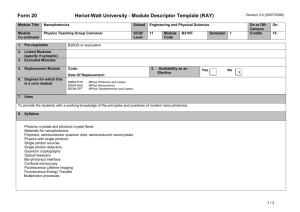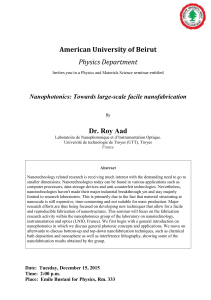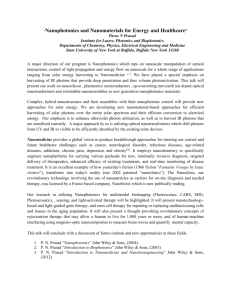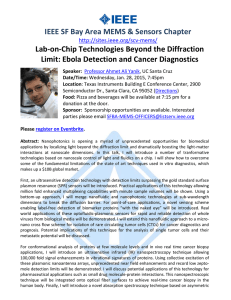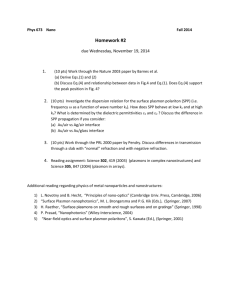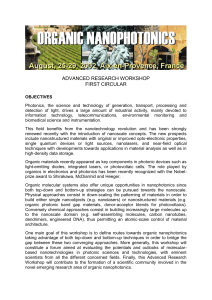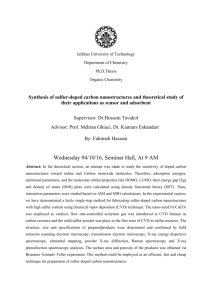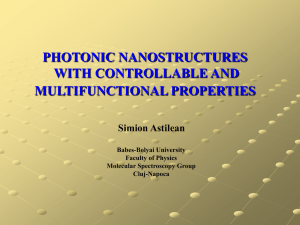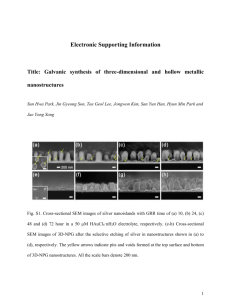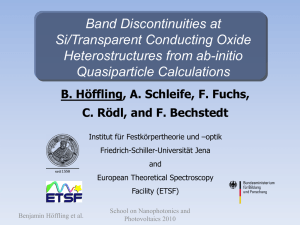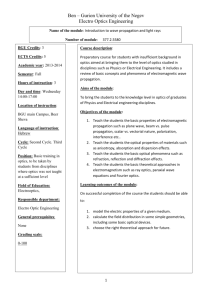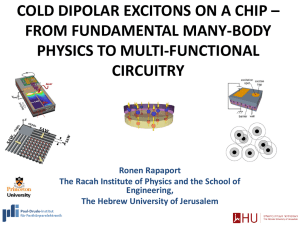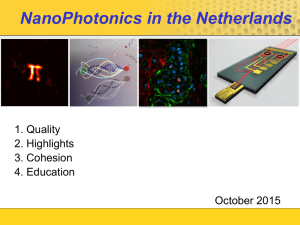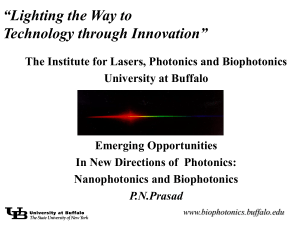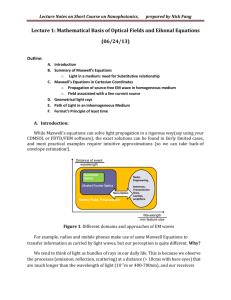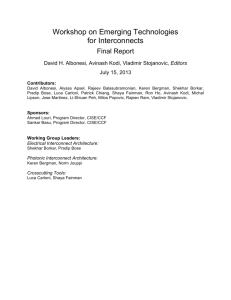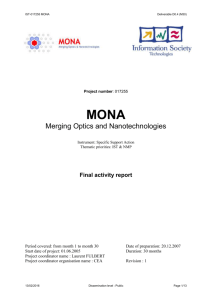EEE 598: Nanophotonics
advertisement
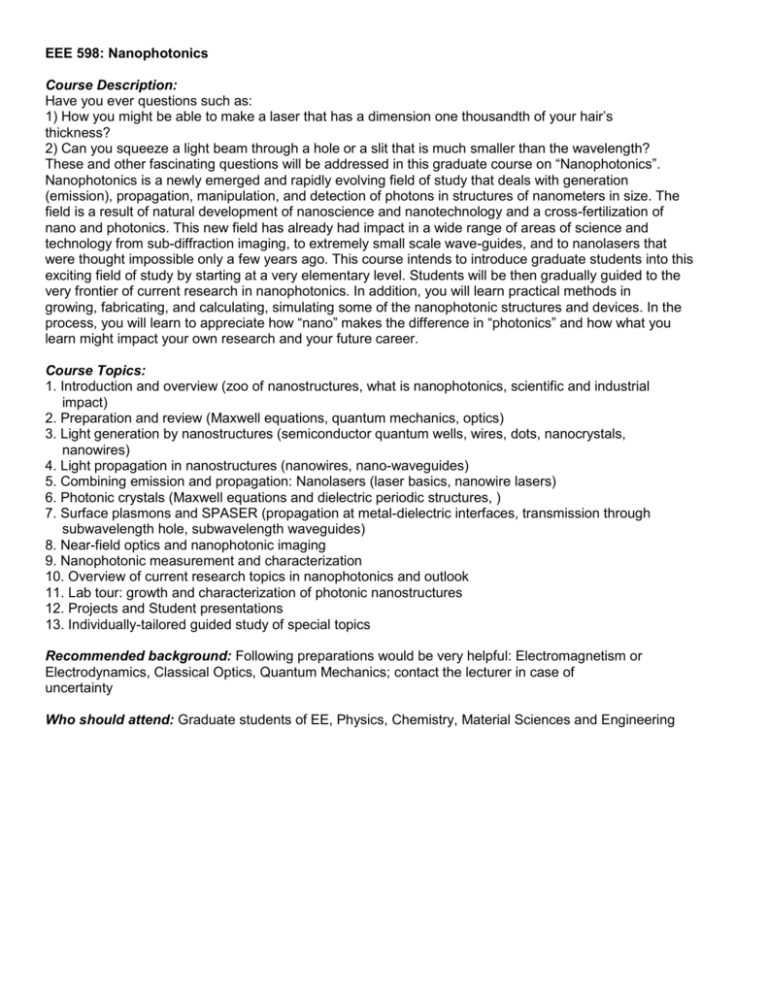
EEE 598: Nanophotonics Course Description: Have you ever questions such as: 1) How you might be able to make a laser that has a dimension one thousandth of your hair’s thickness? 2) Can you squeeze a light beam through a hole or a slit that is much smaller than the wavelength? These and other fascinating questions will be addressed in this graduate course on “Nanophotonics”. Nanophotonics is a newly emerged and rapidly evolving field of study that deals with generation (emission), propagation, manipulation, and detection of photons in structures of nanometers in size. The field is a result of natural development of nanoscience and nanotechnology and a cross-fertilization of nano and photonics. This new field has already had impact in a wide range of areas of science and technology from sub-diffraction imaging, to extremely small scale wave-guides, and to nanolasers that were thought impossible only a few years ago. This course intends to introduce graduate students into this exciting field of study by starting at a very elementary level. Students will be then gradually guided to the very frontier of current research in nanophotonics. In addition, you will learn practical methods in growing, fabricating, and calculating, simulating some of the nanophotonic structures and devices. In the process, you will learn to appreciate how “nano” makes the difference in “photonics” and how what you learn might impact your own research and your future career. Course Topics: 1. Introduction and overview (zoo of nanostructures, what is nanophotonics, scientific and industrial impact) 2. Preparation and review (Maxwell equations, quantum mechanics, optics) 3. Light generation by nanostructures (semiconductor quantum wells, wires, dots, nanocrystals, nanowires) 4. Light propagation in nanostructures (nanowires, nano-waveguides) 5. Combining emission and propagation: Nanolasers (laser basics, nanowire lasers) 6. Photonic crystals (Maxwell equations and dielectric periodic structures, ) 7. Surface plasmons and SPASER (propagation at metal-dielectric interfaces, transmission through subwavelength hole, subwavelength waveguides) 8. Near-field optics and nanophotonic imaging 9. Nanophotonic measurement and characterization 10. Overview of current research topics in nanophotonics and outlook 11. Lab tour: growth and characterization of photonic nanostructures 12. Projects and Student presentations 13. Individually-tailored guided study of special topics Recommended background: Following preparations would be very helpful: Electromagnetism or Electrodynamics, Classical Optics, Quantum Mechanics; contact the lecturer in case of uncertainty Who should attend: Graduate students of EE, Physics, Chemistry, Material Sciences and Engineering
